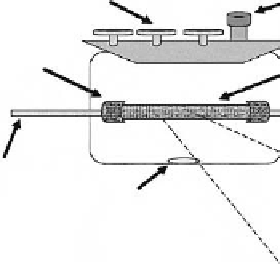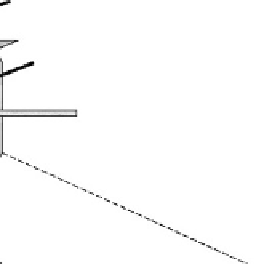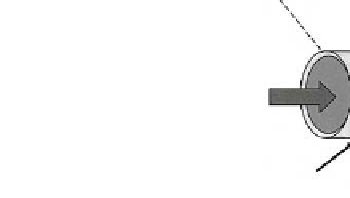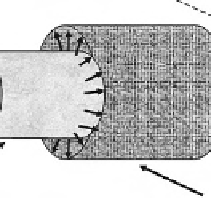Biomedical Engineering Reference
In-Depth Information
Table 7.2-7 Hydrostatic pressure summary
First author
Proteoglycan
Type II collagen
Additional notes
Smith (monolayer, adult bovine
wrist, 10
5
cells/cm
2
, 4 days)
21-fold increase in mRNA
synthesis
9-fold increase in mRNA
synthesis
10 MPa, 1 Hz
Carver (construct, 1-week bovine
knee, 2 10
6
cells/cm
3
PGA,
5 weeks)
2-fold increase in concentration
No significant increase
3.5 MPa, 5/15 s (on/off) for 20 min
every 4 h
Smith (monolayer, adult bovine
wrist, 10
5
cells/cm
2
,4h)
31% increase in mRNA
synthesis
36% increase in mRNA
synthesis
1% fetal bovine serum 10 MPa,
1Hz
Refer to the original works for the references.
bioprocesses which use hydrostatic pressure as a me-
chanical stimulus
[18]
. The duration and magnitude of
hydrostatic loading vary widely between studies, but the
most successful studies dynamically load cartilage for
longer periods of time.
In the case of engineering blood vessels, mechanical
stimulation can be provided via radial distension of the
silicone tube around which a tubular scaffold is sewn, as
demonstrated in
Fig. 7.2-25 [21]
.
In vitro
fluid-induced
shear stress, as occurs in agitated microcarrier cultures,
can be used as a model system for mechanical stimu-
lation of articular chondrocytes. Culture of chon-
drocytes on microcarriers may have beneficial effects
for cartilage tissue engineering applications. Efficient
expression of chondrocytes, without the loss of their
ability to express the differentiated phenotype, would
be highly beneficial for the engineering of cartilage for
clinical purposes. In particular, such expression would
exclude costly and time-consuming
techniques of
redifferentiation.
The thickness of constructs is significantly limited by
the diffusion properties associated with porous scaf-
folds. Dynamic compression helps alleviate these dif-
fusion limitations through pressure gradients within the
scaffold as well as by a secondary mixing effect on the
surrounding medium. In a healthy person, articular
cartilage undergoes direct compression thousands of
times a day without any long-term injury to the tissue.
Unlike hydrostatic pressure, there is an actual solid-on-
solid contact that takes place under direct compression.
Gas exchange
filters
Feed port
PGA
mesh
Dacron
sleeve
Silicone
tubing
Stir bar
Fluid flow
Silicone tube
PGA mesh
Fig. 7.2-25 Vessels made of PGA are sewn around a silicone tube and are attached to the sides of a glass bioreactor with a
nondegradable Dacron sleeve. Mechanical stimulation of the construct is provided via radial distension of the silicone tube as a result
of fluid flow.























